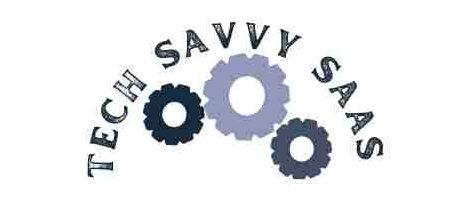3D printing is transforming the manufacturing industry by revolutionizing how parts and products are designed and produced. This technology, known as additive manufacturing, builds objects layer by layer from digital designs, offering unprecedented flexibility and efficiency.
In the realm of rapid prototyping, 3D printing enables companies to create and test prototypes quickly, accelerating the development cycle. For instance, medical device manufacturers are now able to produce customized implants and prosthetics tailored to individual patient needs, a process that previously required lengthy and expensive traditional manufacturing methods.
Mass customization is another significant advantage of 3D printing. This technology allows for the creation of products tailored to specific customer requirements, which is transforming industries like automotive and aerospace. Additive manufacturing is reshaping traditional manufacturing processes, making it possible to produce complex geometries and custom parts with ease.

How 3D Printing is Transforming Manufacturing
From Concept to Creation:
3D printing technology enables companies to swiftly turn digital designs into tangible objects. For example, in the healthcare industry, 3D-printed medical devices, such as custom implants, are now common. This technology allows for precise customization, leading to better fit and functionality in medical treatments.
Reducing Production Costs:
Research shows that 3D printing can significantly lower production costs compared to traditional methods. A study by Wohlers Associates found that additive manufacturing can reduce the cost of producing small-batch and complex parts by up to 30% compared to conventional machining. This cost-effectiveness is particularly evident in sectors where complex geometries are required, which are often prohibitively expensive to produce using traditional injection molding or casting techniques.
Customization and Personalization:
Mass customization has become a reality thanks to 3D printing. For instance, automotive designers are using 3D printers to create bespoke car parts tailored to individual customer preferences. In the aerospace industry, additive manufacturing is used to produce custom components that meet specific performance criteria, reducing lead times and increasing the efficiency of production processes.
Key Benefits of 3D Printing in Manufacturing
Enhanced Design Flexibility:
3D printing offers unparalleled design flexibility. Unlike traditional manufacturing methods, which often require complex tooling and molds, additive manufacturing can create complex parts and intricate designs without the need for additional equipment. For example, GE Aviation uses 3D printing to produce complex metal parts for jet engines, parts that were previously impossible to manufacture using traditional methods.
Faster prototyping and production:
The speed of 3D printing dramatically reduces prototyping times. According to a report by McKinsey & Company, digital manufacturing techniques can cut design-to-production times by up to 90%. This rapid turnaround allows companies to test and refine their designs much more quickly, leading to faster product development cycles and quicker time-to-market.
Sustainability and Waste Reduction:
3D printing supports a circular economy by minimizing material waste. Unlike traditional manufacturing processes, which often involve cutting away material from a larger block, additive manufacturing builds objects layer by layer, using only the material necessary for the final product. This approach reduces the environmental impact of manufacturing and supports more sustainable production practices. For instance, Carbon’s Digital Light Synthesis technology uses up to 90% less material than traditional methods, contributing to a significant reduction in waste.
The Future of 3D Printing in Manufacturing
Innovations on the Horizon
The next decade promises significant advancements in 3D printing technologies. Key innovations on the horizon include fused deposition modeling (FDM) and laser sintering.
Fused deposition modeling is evolving to offer greater precision and speed. Recent developments in FDM technology have led to higher resolution prints and the ability to work with a broader range of materials. For example, Stratasys, a leader in the 3D printing industry, has enhanced its FDM printers to handle high-performance thermoplastics, which are essential for industrial applications.
Laser sintering technology, particularly selective laser sintering (SLS) and direct metal laser sintering (DMLS), is also advancing. These methods are becoming more efficient and cost-effective. For instance, the EOS company has introduced the EOS P 500, which significantly speeds up the production process and improves material properties, enabling the creation of complex geometries and high-quality metal parts.
New materials are expected to further expand the capabilities of 3D printing. Innovations in biomaterials and advanced composites will enable the production of 3D-printed parts with enhanced performance and sustainability. Research into recyclable and biodegradable materials will contribute to the circular economy and reduce the environmental impact of manufacturing.
Challenges and opportunities
Despite the numerous advantages of 3D printing, several challenges need to be addressed for broader adoption.
Quality control remains a critical issue. The variability in print quality and material consistency can impact the reliability of 3D-printed products. For instance, a study by Harvard University highlighted that inconsistent layer adhesion in FDM printing could lead to structural weaknesses in the final product.
Advanced software and hardware solutions are required to overcome these challenges. CAD/CAM software must continue to evolve to handle increasingly complex designs and automated workflows. Companies like Autodesk and SolidWorks are working on software updates that integrate machine learning and artificial intelligence to improve design accuracy and print efficiency.
Hardware improvements are also essential. Innovations in 3D printers that incorporate multi-material capabilities and automated post-processing will enhance the versatility and speed of 3D printing. For example, the Desktop Metal company’s Studio System+ integrates automated debinding and sintering processes, reducing the need for manual intervention and improving overall production efficiency.
Real-life Applications of 3D Printing in Different Industries
Healthcare
3D-printed medical devices and prosthetics are transforming patient care by providing customized solutions. For instance, custom dental implants are now being created with 3D printing to fit individual patients precisely. Company examples include Align Technology, which uses 3D printing for its Invisalign clear aligners, providing personalized orthodontic treatment.
Surgical tools and implants are also being revolutionized. 3D printing allows for the creation of patient-specific implants and custom surgical instruments, which enhance surgical outcomes. Materialise, a leading 3D printing company, offers 3D-printed surgical guides that improve precision in complex surgeries.
Automotive
The automotive industry is utilizing 3D printing for spare parts and prototype components. Automakers like Ford and BMW are exploring additive manufacturing to reduce lead times and production costs. For example, Ford has implemented 3D printing to produce functional prototypes and production tools, resulting in faster development cycles and cost savings.
Additive manufacturing is also being used to create custom parts and performance components. Bugatti has used 3D printing to produce lightweight components for its Chiron supercar, demonstrating the technology’s ability to enhance performance and design flexibility.
Aerospace
Aerospace companies are leveraging 3D printing to manufacture lightweight and complex components that improve efficiency and performance in aircraft and spacecraft. NASA and SpaceX are prominent examples of organizations using 3D printing for rocket engine components and spacecraft parts.
NASA’s Space Launch System (SLS) employs 3D-printed parts to reduce the weight and cost of rocket components, enhancing performance and reliability. Similarly, SpaceX uses 3D printing to produce rocket engine components, which contributes to faster manufacturing and reduced material waste.
FAQs
What is 3D printing, and how does it work?
3D printing, or additive manufacturing, involves creating objects by adding material layer by layer based on a digital design. This process begins with a 3D model, which is then sliced into thin horizontal layers by CAD/CAM software. Additive manufacturing techniques, such as fused deposition modeling (FDM) or selective laser sintering (SLS), use these sliced designs to build up the object gradually.
Fused deposition modeling (FDM) extrudes thermoplastic materials through a heated nozzle, layer by layer. This method is widely used for prototyping and producing functional parts. On the other hand, selective laser sintering (SLS) employs a laser to fuse powdered materials together, creating high-strength components.
3D printing enables rapid prototyping by allowing for quick iterations and modifications of designs. It supports custom production of unique or small-batch items, significantly reducing the lead time compared to traditional manufacturing methods.
What Are the Main Benefits of Using 3D Printing in Manufacturing?
3D printing offers several significant benefits:
- Enhanced Design Flexibility: Additive manufacturing allows for the creation of complex geometries that are challenging or impossible with traditional methods. For example, intricate lattice structures or internal channels can be designed and printed directly, enhancing performance and functionality.
- Faster Prototyping: Companies can rapidly create and test prototypes, leading to shorter development cycles. General Electric reports a 75% reduction in prototyping time using 3D printing technologies, enabling faster innovation.
- Cost Reduction: Additive manufacturing can lower costs by reducing material waste and eliminating the need for expensive tooling. According to a Wohlers Report, 3D printing can reduce production costs by up to 50% in some applications, especially for low-volume or complex parts.
- Sustainability: 3D printing supports sustainability by minimizing material waste and enabling on-demand production, which reduces excess inventory and waste. Stratasys estimates that 3D printing can reduce material waste by up to 90% compared to traditional subtractive methods.
- Mass Customization: The technology allows for mass customization, where products are tailored to individual specifications without significant cost increases. This capability is particularly beneficial in industries like healthcare, where custom implants or prosthetics are produced based on patient-specific requirements.
What industries are most impacted by 3D printing?
Several industries have been significantly impacted by 3D printing, including:
- Healthcare: The healthcare industry benefits from customized medical devices and prosthetics. 3D-printed implants and surgical tools provide tailored solutions for individual patients. Materialize and Align Technology are key players leveraging 3D printing for dental implants and orthodontic treatments.
- Automotive: The automotive industry uses 3D printing for spare parts, prototypes, and production tools. BMW and Ford utilize additive manufacturing to streamline development processes and reduce lead times. Bugatti employs 3D printing for performance parts, demonstrating the technology’s impact on high-performance vehicles.
- Aerospace: In the aerospace sector, 3D printing is employed to manufacture lightweight components and complex parts. NASA and SpaceX utilize additive manufacturing to produce rocket engine components and spacecraft parts, enhancing efficiency and performance.
Are there any limitations to 3D printing?
3D printing does have some limitations.
- Quality Control Issues: Variability in print quality and material consistency can affect the final product. Harvard University research highlights inconsistent layer adhesion in FDM printing, which may result in structural weaknesses.
- Material Restrictions: While 3D printing technologies have advanced, material options are still limited compared to traditional manufacturing methods. Specialty materials such as high-strength metals or biocompatible polymers are continuously being developed to address these limitations.
- High Initial Costs: The initial investment in advanced 3D printers and software can be significant. Industrial-grade printers and advanced materials often require substantial capital expenditures, which may be a barrier for smaller companies.
Ongoing technological advancements are addressing these challenges, with improvements in quality control, material development, and cost reduction paving the way for broader adoption of 3D printing.
Conclusion
3D printing has emerged as a transformative technology in the manufacturing industry, offering notable advantages such as design flexibility, cost efficiency, and sustainability. Its ability to create complex parts and customized products is reshaping traditional manufacturing processes.
As 3D printing technology continues to evolve, its role in shaping the future of manufacturing will become increasingly significant. Companies must stay informed about technological advancements to fully capitalize on the benefits of additive manufacturing and maintain a competitive edge in the evolving manufacturing landscape.






